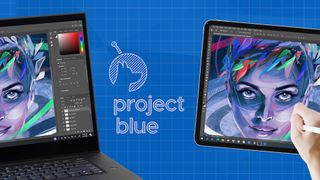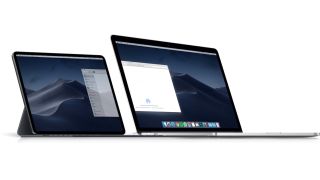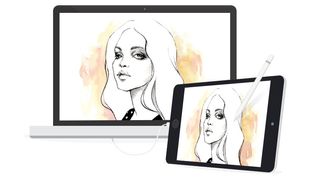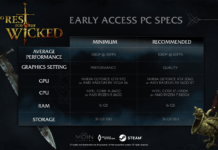Creative Bloq is supported by its audience. When you purchase through links on our site, we may earn an affiliate commission. Learn more
By published
Want to use an iPad as a drawing tablet with a PC? There are a number of ways to do it
If you’re wondering how to use an iPad as a drawing tablet with a PC, you might be surprised at how many options you have. After all, Apple’s products famously don’t play well with others, and Microsoft aren’t exactly rushing to make Windows more compatible with an iPad.
But the real world is inevitably more complicated than tech manufacturers like to believe it is, and there are all sorts of reasons why you might own an Apple iPad and a Windows PC – not least that PCs are a good deal cheaper than Macbooks. You might therefore be wondering if there’s a way to make the two talk to each other, and the good news is that there is.
iPads make for great digital art devices by themselves – an iPad Pro can be the best drawing tablet you can buy without ever needing to get near a computer. However, you might want to hook it up to your PC for workflow reasons, or to get a Windows drawing app working on your iPad – and that’s where this guide comes in.
We’ve found some of the best ways to get your iPad working as a drawing pad with your Windows PC. It’s worth being aware that when using an iPad and a PC in this way, you’ll likely encounter issues like pronounced latency – a delay between your pen stroke being made, and the mark appearing on the screen. It won’t be ruinous but it will be noticeable.
Still shopping for PCs? We have a handy guide to the best laptops for graphics design, and if you need something to draw with, don’t miss our guide to the best iPad stylus.
Below we’ve compiled three of the easiest ways to use your iPad with a PC. This isn’t an exhaustive list, but these are three popular and tested methods that are relatively simple to set up.
Astropad Project Blue is a new venture – a way to turn an iPad into a drawing tablet that interfaces with a PC. It’s still in a public beta, so you can download it for free right now; you need to download two applications, one for the iPad, and one for the PC. Once you’ve got those, you’re good to go. Astropad Project Blue lets you connect the iPad and PC via Wi-Fi or physically via USB. If your setup can accommodate the physical connection then it is noticeably better, with reduced latency.
Once you’ve loaded up Astropad Project Blue on the iPad it will mirror or extend your PC’s desktop, with a workspace sidebar that gives you quick access to useful tools like brushes, pencils, undo/redo, etc.
Project Blue supports the Apple Pencil, and offers pressure sensitivity in a variety of applications such as Blender, Clip Studio Paint and Zbrush. It uses the Windows Ink tablet driver API to support pressure sensitivity – so if a program doesn’t support this API, it won’t support pressure sensitivity. And yes, this unfortunately does include Adobe Photoshop CS6.
Astropad Project Blue is a work in progress. So, while this does mean there are some kinks and oddities to work out, if you download now, you can give your feedback to the creators and help improve future versions of the software. Plus, the beta is currently free! 
The team updates the application regularly, and are continually adding all sorts of improvements. If you opt for the Duet Pro version (more on this below) means you get responsive Apple Pencil performance, pressure sensitivity, tilt sensitivity, palm rejection and other such advanced features. As with any of these PC/iPad solutions, there is noticeable latency between the pen stroke and its appearance on the screen, but it’s pretty slight, and more than acceptable.
Duet Display is optimised to run with minimal drain on the CPU and the battery, meaning you can keep drawing for longer without needing to run off and find a power socket. There is also a highly responsive support team on hand, so if you run into problems getting the software to work, they’ll be able to troubleshoot a few effective solutions.
Duet Display as a standalone costs $19.99 on the app store. There are subscription models available for increased functionality – Duet Air costs $24.99 per year, but adds wireless connectivity, however if you’re looking to use your iPad as a digital drawing pad, we’d recommend going the whole way and picking Duet Pro.
This costs $34.99 per year, but unlocks most of the features you’ll need, like tailored drawing algorithms, pressure sensitivity, tilt sensitivity, multi-touch gestures, zoom/pan, hover, line smoothing, color calibration and more. 
EasyCanvas is pretty much just plug and play, so it’s easy for anyone to use. Latency is noticeable but minimal, and the desktop display is rendered vividly. On Windows, you can also connect wirelessly, which is handy. The app supports pressure sensitivity on the Apple Pencil, though as is generally the case, it may or may not work with your chosen drawing app. If you’re using Photoshop, the manufacturers recommend diving into the settings and changing the pen input from WinTab to tablet PC as a way to get pressure sensitivity working, and also to make sure you’re using a brush that supports pressure sensitivity.
It’s not quite as slick as Duet Display Pro, without the dedicated support team on hand, but EasyCanvas is cheaper and does work really well.
Read more:
Jon is a freelance writer and journalist who covers photography, art, technology, and the intersection of all three. Interests include old film cameras, new digital gadgets, and pounding the pavements of London looking for fresh photo opportunities. If he finds any, he will let you know.
Sign up below to get the latest from Creative Bloq, plus exclusive special offers, direct to your inbox!
Thank you for signing up to Creative Bloq. You will receive a verification email shortly.
There was a problem. Please refresh the page and try again.
Creative Bloq is part of Future plc, an international media group and leading digital publisher. Visit our corporate site.
© Future Publishing Limited Quay House, The Ambury, Bath BA1 1UA. All rights reserved. England and Wales company registration number 2008885.












